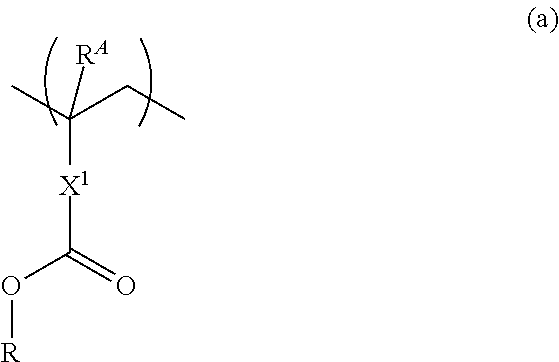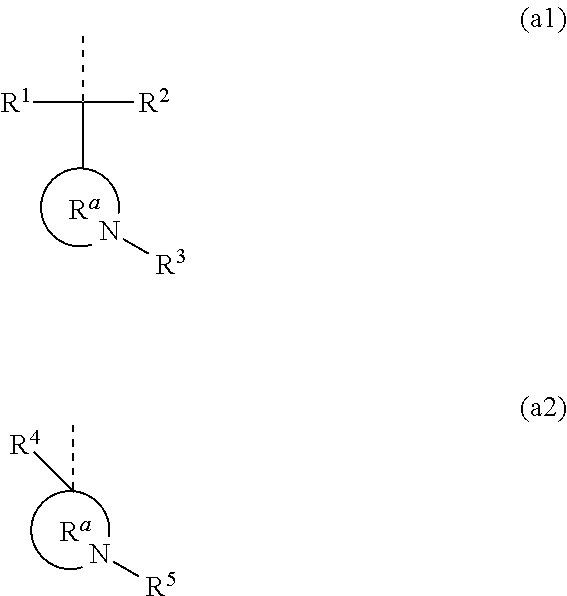Positive resist composition and pattern forming process
a composition and resist technology, applied in the field of positive resist composition and pattern forming process, can solve the problems of reducing the resolution of two-dimensional patterns such as hole patterns, sensitivity lowering, etc., and achieve the effects of high resolution, high sensitivity, and high decomposition efficiency of acid generators
- Summary
- Abstract
- Description
- Claims
- Application Information
AI Technical Summary
Benefits of technology
Problems solved by technology
Method used
Image
Examples
synthesis example 1-1
[0178]Synthesis of Monomer 1
[0179]In 50 g of THF were dissolved 11.5 g of 2-azetidin-3-yl-propan-2-ol and 0.4 g of 4-(dimethylamino)pyridine. Under ice cooling, 18.5 g of methacrylic anhydride was added dropwise to the solution. The solution was stirred at room temperature for 5 hours, after which water was added to quench the reaction. The reaction solution was subjected to standard aqueous workup and purified by silica gel column chromatography, obtaining Monomer 1 of the following formula.
synthesis example 1-2
[0180]Synthesis of Monomer 2
[0181]Monomer 2 of the following formula was obtained by the same procedure as in Synthesis Example 1-1 aside from using 14.3 g of 2-(4-piperidyl)-2-propanol instead of 2-azetidin-3-yl-propan-2-ol.
synthesis example 1-3
[0182]Synthesis of Monomer 3
[0183]Monomer 3 of the following formula was obtained by the same procedure as in Synthesis Example 1-1 aside from using 12.9 g of 1,4-dimethyl-4-piperidinol instead of 2-azetidin-3-yl-propen-2-ol.
PUM
| Property | Measurement | Unit |
|---|---|---|
| wavelength | aaaaa | aaaaa |
| size | aaaaa | aaaaa |
| reaction temperature | aaaaa | aaaaa |
Abstract
Description
Claims
Application Information
 Login to View More
Login to View More - R&D
- Intellectual Property
- Life Sciences
- Materials
- Tech Scout
- Unparalleled Data Quality
- Higher Quality Content
- 60% Fewer Hallucinations
Browse by: Latest US Patents, China's latest patents, Technical Efficacy Thesaurus, Application Domain, Technology Topic, Popular Technical Reports.
© 2025 PatSnap. All rights reserved.Legal|Privacy policy|Modern Slavery Act Transparency Statement|Sitemap|About US| Contact US: help@patsnap.com



